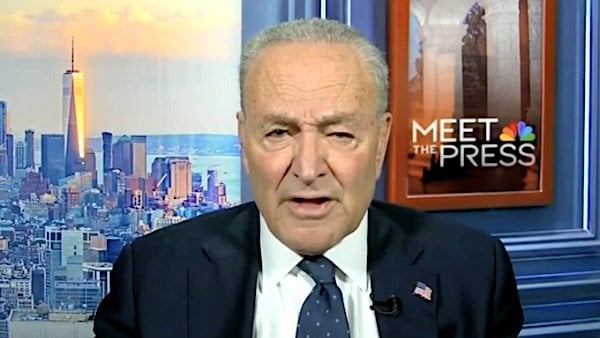Copyright The Philadelphia Inquirer

The historic government shutdown is a clear sign that cluelessness and dysfunction in Washington has reached epic proportions. Yet focusing on the shutdown rather than the concerns underpinning the shutdown misses the point: There are multiple social safety net issues, especially Social Security, that must be addressed. The health insurance system is a mess. Without government subsidies — which are at the heart of the legislative impasse behind the current shutdown — most of the 24 million Affordable Care Act recipients will face massive cost increases, and Obamacare would become unaffordable to millions. Yet nothing has been proposed to replace government subsidies that would improve the affordability of healthcare insurance. Also being highlighted is food insecurity. SNAP helps feed about 42 million people, including roughly 16 million children. Yet the administration’s unwillingness to use any and all available funds to make full SNAP payments indicates that food is now a political tool. But it doesn’t stop there. Other safety net programs such as the Women, Infants, and Children (WIC) and Section 8 housing subsidies are under attack. Put simply, the whole range of social services for the poor — healthcare, food, childcare, and housing assistance — is being downgraded in importance. This year, an average of 69 million people per month have been receiving Social Security checks. It is the nation’s largest safety net program and its solvency is at risk. Why? The answer is in the Social Security Act itself. Social Security was a product of the Great Depression, when the United States had no national social safety net. Conditions in the 1930s were dire. The unemployment rate broke 10% in late 1930, and while it peaked at 25% in spring 1933, it remained in the double-digits until mid-1940. In 1935, with so many out of work and social programs being handled haphazardly by state, local, private, and religious organizations, President Franklin Roosevelt created the New Deal and Social Security to address widespread poverty and food insecurity. The key element embedded in the Social Security bill was Roosevelt’s demand that workers pay for the benefits through a payroll tax. This was a brilliant move as it created a “sense of entitlement.” Workers paid for it, so they demanded they get it. Politicians cut the program at their own peril. Even though Social Security expanded benefits and added recipient groups, paying for it was not initially a problem. Enrollment was low, and the workforce was growing. In 1945, there were about 42 workers for every beneficiary. But that soon changed. By 1960 the ratio of workers to recipients had fallen to 4. The ratio stabilized at about 3.3 between 1975 and 2008 as the huge Baby Boom generation entered the labor market while the much smaller Greatest Generation retired. Now, however, Boomers are retiring at a rapid pace, and people are living longer. The ratio is currently around 2.7 and projected to drop to 2.2 by 2045. The current ratio cannot sustain the system as presently structured. Benefits are exceeding revenues, and reserves built up over decades to support shortfalls are declining. It is projected that within a decade, Social Security’s reserves could be depleted, and the system will be able to pay only about 80% of promised benefits. In 1935, most compensation was in the form of wages. A tax on income meant that almost all workers, no matter how high their salary or seniority, paid into the system. That has changed dramatically. Ninety years ago, there were no such things as stock options or carried interest tax loopholes. Businesses and accountants have created these imaginative forms of compensation in the years since. Today, all these other forms of compensation are off-limits to Social Security. That Social Security is still only a payroll tax is nonsensical. The narrow tax base, coupled with income caps, have made the Social Security tax the most fiscally irresponsible and structurally unfair tax in a tax code filled with ridiculous special-interest loopholes. Consider this: Elon Musk reportedly draws no salary but gets paid in stock options and other forms of compensation. That means the richest person in the world likely does not pay into Social Security. Mark Zuckerberg’s salary is reported to be $1 per year, so he likely pays no Social Security taxes. There are many other examples. Exacerbating the problem is the growing concentration of compensation and wealth in the hands of upper-income workers. The greater the share of income that flows to upper-income workers, the less income there is available for Social Security taxes. And that is where the solution to the Social Security solvency issue starts: The tax base must be made more inclusive and much more fair. The solution starts with ending the maximum income cap on the Social Security tax. All salary income should be taxed. That is where fairness starts. But that only gets you so far. Taxing all income would reduce the financial shortfall only by about half. Consequently, the tax base needs to move from a payroll tax to a compensation tax. Start with taxing stock options, the favorite place to hide compensation from the tax system. Next, tax the crazy boondoggles and special interest loopholes, such as carried interest, that are not being treated as wages. Studies indicate that it would still require taxing a range of worker benefits to put the Social Security finances back on solid footing. Taxing things such as health benefits, which are special non-income loopholes for workers, will be a tough sell. But as long as workers can point to Musk or Zuckerberg and say, ‘He doesn’t pay Social Security taxes," taxing benefits is a nonstarter. Social Security can be saved by making it fairer and more inclusive. Will our political leaders, who cannot even pass a budget, have the willingness to make the hard decisions to do that? Good question.



